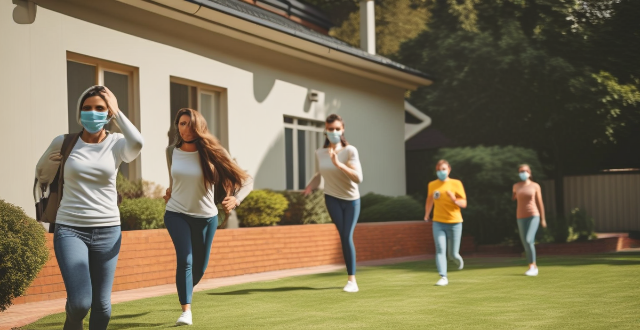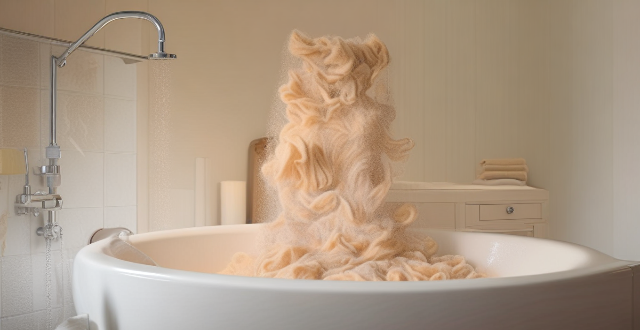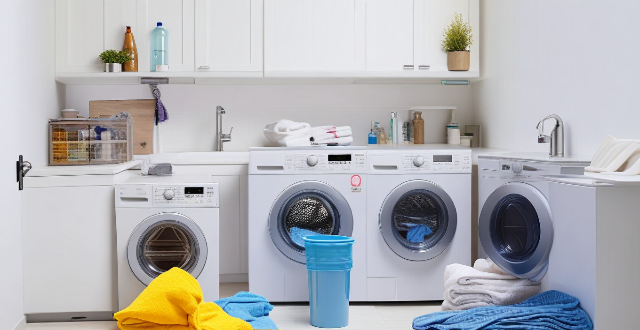Clothes Disinfectant

Is it safe to use lemon juice as a disinfectant in homemade cleaning recipes ?
Is it safe to use lemon juice as a disinfectant in homemade cleaning recipes? Let's take a closer look at the science behind this question. Lemon juice has a high acidity level, with a pH of around 2, making it effective at breaking down dirt and grime. However, when it comes to killing bacteria and viruses, the acidity alone may not be enough. While lemon juice does have some antimicrobial properties due to its natural compounds like limonene, these are not strong enough to completely disinfect surfaces. In fact, studies have shown that lemon juice is not effective at killing certain types of bacteria like E. coli and Salmonella. Some homemade cleaning recipes call for combining lemon juice with other ingredients like vinegar or hydrogen peroxide. While these combinations may increase the disinfecting power, they still may not be as effective as commercial disinfectants. There are also safety concerns to consider when using lemon juice as a disinfectant. Due to its high acidity, lemon juice can be corrosive to certain surfaces like marble and granite. It can also damage metals over time. Lemon juice can cause skin irritation or burns if it comes into contact with open wounds or sensitive skin. It is important to wear gloves while using it in cleaning solutions. Additionally, some people may be allergic to lemons or their scent, which could trigger an allergic reaction when using lemon juice in cleaning products. If you are looking for natural disinfectants, there are several alternatives to lemon juice such as white vinegar, hydrogen peroxide, tea tree oil, and essential oils like eucalyptus, lavender, and peppermint oils. These alternatives have strong antimicrobial properties and can be added to homemade cleaning solutions for a fresh scent. In conclusion, while lemon juice can be a useful ingredient in homemade cleaning recipes due to its degreasing properties, it should not be relied upon as a sole disinfectant. If you are concerned about germs and bacteria, it is best to use a commercial disinfectant or one of the alternative natural disinfectants mentioned above.

Can I try on clothes at a sample sale ?
Attending a sample sale can be an exciting experience for fashion enthusiasts, as it often presents the opportunity to purchase designer clothing at discounted prices. However, one question that frequently arises is whether customers are allowed to try on clothes during these events. In this article, we will explore the intricacies of trying on clothes at a sample sale and provide some tips for making the most of your shopping experience.

What are some tips for washing clothes faster without compromising quality ?
Washing clothes faster without compromising quality is possible by following these tips: sorting clothes properly, using the right detergent, choosing the right wash cycle, not overloading the washer, and hanging dry when possible. These steps can save time, energy, and money while ensuring clean and fresh garments.

What types of disinfectants are safe to use around children and pets ?
The article discusses various types of disinfectants that are safe for use around children and pets. These include alcohol-based disinfectants, hydrogen peroxide, vinegar, baking soda, chlorine bleach (in a dilute solution), steam cleaning, and tea tree oil. It emphasizes the importance of proper usage, storage, and supervision to ensure safety for all family members, including pets.

What are the best ways to wash clothes quickly and effectively ?
This article discusses the best ways to wash clothes quickly and effectively. It covers preparation steps such as sorting clothes, pre-treating stains, and checking pockets. It also explains how to set up a washing machine with the right cycle, warm water, and detergent. Handwashing clothes is another option that involves soaking clothes in warm water with detergent, scrubbing gently, rinsing thoroughly, and hanging to dry. After washing, drying clothes properly is important to prevent wrinkles and damage. Overall, following these steps can help you save time and keep your clothes clean and fresh.

What are some quick and easy ways to get my clothes clean ?
Here are some quick and easy ways to keep your wardrobe fresh and clean: 1. Spot Cleaning: For small stains or spills, dampen a cloth with water or a mild detergent and gently blot the affected area until the stain is removed. 2. Hand Washing: Fill a sink or basin with warm water and add a small amount of gentle detergent. Gently agitate clothing items in the water, then rinse thoroughly and hang to dry. 3. Machine Washing: Sort clothes by color and fabric type before washing. Use a gentle cycle and cold water for delicate items, and warmer water for more durable fabrics. 4. Dry Cleaning: Check care labels on garments made from silk, wool, or other delicate materials. If dry cleaning is recommended, take clothes to a professional dry cleaner. 5. Air Drying: Hang clothes outside on a clothesline or indoors on a drying rack to save energy and prolong their lifespan. This method also helps eliminate wrinkles and static cling. 6. Steaming: Hang clothes in a steamy bathroom after a shower or use a handheld garment steamer to remove wrinkles and odors. By incorporating these methods into your routine, you can keep your wardrobe looking its best without spending hours on laundry day.

Is there a natural alternative to bleach that can be used for disinfecting surfaces ?
There are several natural alternatives to bleach that can be used for disinfecting surfaces, including vinegar, hydrogen peroxide, and tea tree oil. These alternatives are effective against bacteria, viruses, and fungi, and are also safer and eco-friendly compared to bleach. Vinegar is inexpensive and easy to find, but has a strong smell and may damage certain surfaces if left on for too long. Hydrogen peroxide is also inexpensive and easy to find, but can be harmful if ingested or inhaled in large quantities and may fade certain fabrics or surfaces if left on for too long. Tea tree oil is a natural antimicrobial agent that is safe for pets and children, but is expensive compared to other natural disinfectants and may cause skin irritation if not diluted properly. By using these natural disinfectants, you can keep your home clean and healthy without exposing yourself or your family to harsh chemicals.

How long does the virus that causes COVID-19 survive on surfaces, and how should those surfaces be cleaned and disinfected ?
The COVID-19 virus, SARS-CoV-2, can survive on surfaces for varying lengths of time, depending on factors such as the type of surface, temperature, humidity, and the amount of virus present. The timeline for virus survival on surfaces includes up to 4 hours on copper, up to 24 hours on cardboard, and up to 72 hours on plastic, stainless steel, glass, banknotes, and coins. To effectively clean and disinfect surfaces, it is recommended to follow a two-step process: cleaning the surface with soap or detergent and water, and then disinfecting the surface with an EPA-approved disinfectant. Examples of approved disinfectants include diluted bleach, alcohol solutions with at least 70% alcohol, hydrogen peroxide (3%), and quaternary ammonium compounds. It is important to wear gloves when handling disinfectants, ensure proper ventilation, never mix different cleaning products, and disinfect frequently touched surfaces regularly.

How often should I disinfect my home to prevent the spread of germs ?
To prevent the spread of germs in your home, it's important to disinfect high-touch surfaces daily, including doorknobs, light switches, countertops, bathroom fixtures, and electronic devices. Floors and carpets should be cleaned regularly as well, with hardwood floors mopped weekly and carpets vacuumed twice a week and steam cleaned monthly. Soft furnishings like couches and chairs should be vacuumed weekly, and bedding should be washed in hot water every week. In the kitchen and eating areas, cutting boards and utensils should be washed after each use, and dishes and cups should be cleaned after each meal. Laundry, including clothes and towels, should be washed immediately after wearing or use. Children's toys should also be disinfected regularly, with plastic toys wiped down weekly and plush toys washed monthly. When disinfecting, it's important to follow the instructions on the product label, avoid mixing cleaning products, wear gloves to protect your hands, ensure proper ventilation by opening windows or turning on fans, clean before disinfecting, use paper towels to avoid cross-contamination, don't forget to clean and disinfect trash cans, and sanitize sponges and brushes regularly. By following these guidelines, you can help prevent the spread of germs within your home and maintain a healthy environment for you and your family.

Is it necessary to wear protective gear when applying disinfectants in household settings ?
In conclusion, wearing protective gear when applying disinfectants in household settings is necessary to protect yourself from potential harm. Disinfectants contain chemicals that can be harmful if not used properly, and there are risks associated with their use. Personal Protective Equipment (PPE) such as gloves, goggles, masks, and protective clothing can help minimize these risks. While it may not be necessary to wear full PPE every time you clean your home, there are certain situations where it is recommended. It is always better to err on the side of caution and wear appropriate PPE when using disinfectants to ensure your safety and health.

How can I incorporate sustainable fashion into my lifestyle ?
Incorporating sustainable fashion into your lifestyle is essential for preserving the environment and promoting fair labor practices. To do so, educate yourself on sustainable brands and fast fashion's impact, support ethical and sustainable brands, reduce consumption by practicing mindful shopping and creating a capsule wardrobe, maintain and care for your clothes properly, recycle or donate old clothes, and advocate for change by using your voice and engaging with brands.

What are the best practices for personal hygiene ?
Personal hygiene is essential for maintaining good health and preventing the spread of illnesses. Best practices include washing hands regularly, showering daily, brushing teeth twice a day, wearing clean clothes, trimming nails, covering mouth when coughing or sneezing, avoiding touching face, keeping living space clean, getting enough sleep, and staying hydrated.

What are the best ways to remove stains from clothes ?
Removing stains from clothes requires pre-treatment, stain removers, home remedies, laundry detergent, and sometimes professional dry cleaning. Pre-treating the stain by blotting it with a clean cloth or paper towel is crucial. Commercial stain removers can be effective for various stains, while home remedies like baking soda and vinegar, hydrogen peroxide, and lemon juice can tackle stubborn stains. Applying laundry detergent directly to the stain and washing it afterward can also work. For delicate fabrics or persistent stains, professional dry cleaning may be necessary. By following these steps, most types of stains can be effectively removed from clothing.

How do I maximize my laundry routine for efficiency ?
Maximizing Laundry Routine for Efficiency is a guide that provides tips and tricks on how to make the most out of your laundry routine. The guide covers various aspects of laundry, including preparation, washing, drying, folding and storing, and maintenance. It emphasizes the importance of separating clothes by color and fabric type, using the right detergent and amount, choosing the appropriate wash cycle and water temperature, not overloading the washing machine, using the right dryer setting, removing clothes promptly after drying, folding clothes neatly, storing clothes appropriately, cleaning the washing machine regularly, and maintaining the dryer properly. By following these tips, you can save time, energy, and money while keeping your clothes looking their best.